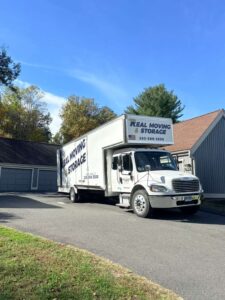Get a Free Estimate Today!
4 Tips for Researching Your New Neighborhood Before You Move
Moving to a new home brings excitement, but choosing the right neighborhood is just as important as finding the right property. A well-researched neighborhood ensures comfort, safety, accessibility, and a smooth transition. By understanding the area before the move, you avoid surprises and gain the confidence that your new environment supports your lifestyle, routine, and long-term goals.
Below are four practical and reliable tips to help you study your new neighborhood deeply before making the final move.

Explore Essential Local Amenities and Daily Convenience
Start by checking how convenient daily living will be in your new area. Look at grocery stores, healthcare facilities, schools, fitness centers, parks, and entertainment options.
Dig deeper by observing:
- Distance to your workplace
- Connectivity to highways and public transportation
- Weekend activity options
- Availability of emergency services nearby
If you’re planning a relocation to Connecticut, researching the area is even more helpful when planning a local move in Norwalk, as exploring essential services early makes the transition smoother. A detailed guide like this helps you understand how the town functions day-to-day.
Check Safety, Crime Rates & Community Standards
Safety is a core factor in selecting any neighborhood. Review crime statistics, police response times, street lighting, and community activity. Take time to drive around during the day and evening to observe how lively or quiet different areas are.
Community-driven areas usually reflect:
- Clean surroundings
- Active neighborhood associations
- People walking, jogging, or chatting outdoors
- Well-maintained public spaces
If your relocation route involves long-distance planning—for example, scheduling a move from Connecticut to South Carolina—researching community standards ahead of time helps you compare neighborhoods between states.
Study Local Real Estate Trends & Future Growth
Neighborhood dynamics often change due to new developments, zoning plans, and market trends. Spend time understanding:
- Rental vs. ownership ratio
- Year-to-year property value changes
- New upcoming commercial developments
- Long-term city planning reports
Areas showing steady value appreciation often offer better living experiences and long-term investment stability. If you’re relocating from a major city like New York, comparing real estate patterns becomes even more important. Guides focused on relocation—such as planning a move from New York to Florida—help you evaluate affordability, amenities, and lifestyle differences between both regions.
Talk to Locals & Observe Real Neighborhood Behavior
One of the best ways to understand a neighborhood is by speaking directly to residents. Locals can give you real insights on:
- Traffic patterns
- Noise levels
- Parking issues
- School performance
- Best routes and shortcuts
- Community involvement
Spend a weekend exploring cafés, parks, and markets. Observe how people interact, the general vibe, and the overall atmosphere. These small observations reveal more than online reviews ever can.
Final Thoughts
Researching your neighborhood before moving saves time, money, and stress. Whether you’re relocating locally or planning a long-distance move across states, understanding your new area ensures a smoother, more confident transition. Explore amenities, check safety, study market trends, and engage with the community—each step brings you closer to a home that truly feels right.